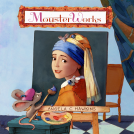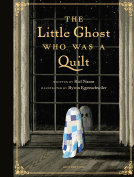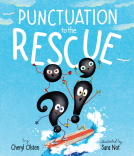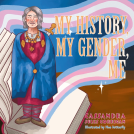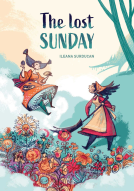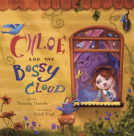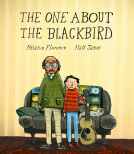
Kaiju Unleashed
An Illustrated Guide to the World of Strange Beasts
by Shawn Pryor
This title was previously available on NetGalley and is now archived.
Send NetGalley books directly to your Kindle or Kindle app
1
To read on a Kindle or Kindle app, please add kindle@netgalley.com as an approved email address to receive files in your Amazon account. Click here for step-by-step instructions.
2
Also find your Kindle email address within your Amazon account, and enter it here.
Pub Date 29 Oct 2024 | Archive Date 21 Nov 2024
Talking about this book? Use #KaijuUnleashed #NetGalley. More hashtag tips!
Description
Kaiju (Japanese for “strange creature”) is a film genre that emerged in Japan in the early ’50s. The movies center on giant monsters battling humans, machines, or other beasts. First popular in the ’50s and ’60s, this film category has stomped its way back into mainstream culture.
This comprehensive guide features:
- A foreword by Jason Barr, author of The Kaiju Film and The Kaiju Connection
- A thorough discussion of monster movies (Gamera; Rodan; Destroy All Monsters)
- Insight into how kaiju has impacted international films (Ant-Man; Attack of the 50-Foot Woman; Jurassic Park)
- Stunning movie posters and film stills, plus fan-made tributes to some of the kaiju classics (Godzilla; King Kong; Mothra; Pacific Rim)
If you are a kaiju fan or are interested in kaiju’s cultural influence worldwide, this display-worthy volume provides the perfect general introduction to the genre, reference to its film highlights, and celebration of its practitioners, trends, and stories.
Available Editions
| EDITION | Other Format |
| ISBN | 9780760392898 |
| PRICE | US$29.99 (USD) |
| PAGES | 240 |
Available on NetGalley
Featured Reviews
A comprehensive book on Kaiju of the screen and page.
This goes into detail of the beginnings of the creature creations, the different creatures that have been created for the screen (the known and the more obscure), the different eras of each creature, how the kaiju genre has influenced hollywood and modern movies, and so much more.
Original kaiju movie posters, movie stills, movie facts & trivia scattered throughout the book create an awesome book for not only kaiju and monster fans, but is an interesting read for movie fans.
Huge (Kaiju) thanks to Quarto Publishing Group and Netgalley for making this amazing compendium of strange and epic beasts available for review. I was so excited to find Shawn Pryor’s new guide Kaiju Unleased: An Illustrated Guide to the World of Strange Beasts available on Netgalley! I am a huge Godzilla fan, and like Shawn Pryor, I had my initial exposure to Godzilla as a kid watching movies on Saturday afternoons, amazed at the destructive power of this giant lizard who could seemingly breath blue fire.
While the book is a great reference for classic Toho films from the 1950s through the 1970s, Pryor also explores (and helpfully defines) the other eras of Godzilla films, including the more recent Heisei, Millennium, and Reiwa eras. I was glad to learn more about these eras since I never really new the differences or the story lines. I’ve watched a few from the Heisei and Millennium eras, but didn’t get into them as much. However, Pryor’s entries for each of these films not only provides great information about the actors and directors, but he also acknowledges the suit actors and explains the differences in the construction and artistry of the Godzilla suit, highlighting differences in appearance. I also loved how the movie summaries tried to tie the plots together for continuity or they acknowledged points of departure, where the films went in different directions and told alternate story lines. Furthermore, Pryor also brings in other Kaiju who battled with or supported Godzilla. Having these references not only helped me develop a watch list, but also helped to provide a great frame of reference for the various Kaiju, and what they may have represented in the stories. Pryor typically ended with some kind of analysis or evaluation, either his own or from another critic, which was also helpful to see how the films were received. I loved how there was always something positive to say about these films, even when Pryor acknowledged that they may not have performed well in the box office or were not as well filmed as other entries. The Godzilla section ends with the recent Godzilla Minus One, which has rightly been lauded as one of the best, if not the best, Godzilla movie.
What was also great about this book is that Godzilla is only the starting point. Pryor goes on to explore the other Kaiju in many of the other films, and shows where they came from and what their movie series were like. I learned so much about the other beasts. I also really liked how Pryor notes that while Godzilla is probably the most famous, King Kong is probably the original Kaiju, and there are sections about American Kaiju, especially the various iterations or King Kong, another personal favorite. The book then examines some other Kaiju movies from other countries, included some from South (and one from North) Korea. This really opened my eyes, and I was fascinated to learn about different movies from other cultures. Pryor then explores other media like Kaiju television shows, manga, comics, books, and video games. I can’t wait to track down some of these shows and television movies from the 70s. I also was intrigued to consider Grape Ape as a Kaiju. I shared this with my kids and we had fun watching the theme song. In any event, this is a thoroughly researched and considered book that explores all avenues of Kaiju. Beyond the text, there were great images throughout the book, detailing the history and promotion of these films, as well as interesting facts and other data about Kaiju. This is definitely a great book for anyone who loves Godzilla movies or other Kaiju films. I really appreciated how Pryor’s book ends with Kaiju in various forms of popular culture, especially since we see how Godzilla and Kong have teamed up for a slew of movies in Universal’s Monsterverse, and in series like Monarch: Legacy of Monsters. Pryor’s research and analysis helps to show how these monsters are not only great entertainment to help us through challenging times, but can also serve as interesting metaphors that address social issues and problems in the world. Although I have a digital copy, I would definitely love to have a hardback version of this book. I could imagine how nice the layout and images would look in a real copy. Highly recommended and enjoyable book.
I’ve always enjoyed Godzilla movies so I was excited to read a reference book about all of the monsters in this universe. It was well researched and I enjoyed what was going on. Shawn Pryor does a great job in writing this and was researched well, and was a fun read for the fan of Kaijus.
Readers who liked this book also liked:
Sara T. Behrman
Children's Fiction, Outdoors & Nature, Parenting & Families
Natasha Daniels
Children's Fiction, Children's Nonfiction, Parenting & Families




